What is a Side Out in Pickleball?
A "side out" in pickleball represents a crucial moment when the serving team fails to win a point during their turn to serve. In this situation, the serving team's control is relinquished, and the opportunity shifts to the receiving team. The mechanics of a side out are similar to the concept in volleyball, where failing to score during the serve results in a loss of service rights. Understanding this rule is essential as it encapsulates the game's flow and strategy.
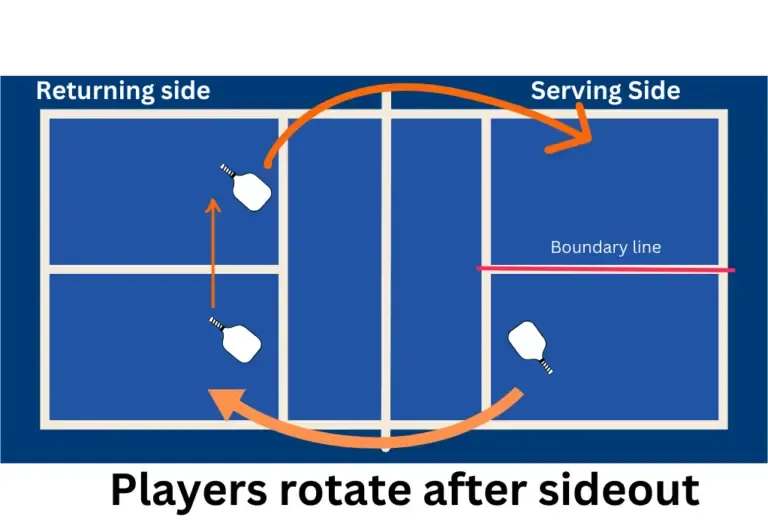
The implications of a side out extend beyond just changing who serves. It symbolizes a shift in power dynamics within the match. When one team achieves a side out, they regain possession and have the chance to score points, while the previous serving team feels the pressure of having lost their chance to accumulate points. The inability to capitalize on serve can infuse an element of psychological pressure, motivating the receiving team to adopt a more aggressive posture in their forthcoming play. Each side out effectively changes the rhythm of the game, reigniting competitive energy and prompting teams to rethink their strategies.
Understanding the rules governing side outs is fundamental to developing effective gameplay. Players must be keenly aware of the scoring structure, as only serving teams can earn points, emphasizing the importance of maintaining the serve. A side out marks the end of an opportunity to score, making every individual serve and rally a test of skill and strategy. As we progress into the exploration of the importance of side out rules, it becomes clearer how critical these rules are to the overall game dynamics.
Importance of the Side Out Rule in Gameplay
The side out rule in pickleball is more than just a means of determining serving and scoring; it profoundly influences the flow and psychological dynamics of the match, affecting both teams' strategies and the overall game atmosphere.
- Regaining Serving Control: The primary objective of executing a side out is to regain control of serving, which is vital for scoring points and controlling the game's pace. The team that successfully manages a side out transitions from a defensive to an offensive stance, seizing the opportunity to dictate play. The shift in serve becomes a pivotal moment, suggesting that the tides of the match could turn in their favor.
- Psychological and Momentum Shifts: Successfully pairing strategic plays to achieve a side out can greatly boost the confidence of the receiving team while simultaneously creating psychological pressure on the serving team. The loss of serve can demoralize the serving side, altering their composure and focus, especially if they have enjoyed a dominant run in the match prior.
- Fairness and Equality: The side out rule ensures that the game remains competitive and fair by preventing one team from monopolizing scoring opportunities. Each side out introduces the chance for both teams to play and participate actively, avoiding scenarios where one team continuously scores off a single serving advantage.
- Gameplay Dynamics: With every side out, players experience a fresh start that revitalizes the game. This launch pad for new strategies keeps players on their toes, as they must remain focused, adapting quickly to the demands of each rally. Each point, therefore, can result in a significant change in the game's outcome.
- Opportunities for Scoring: Given that only the serving team can score during rallies, the side out emphasizes the importance of defensive plays and strategic responses. Regaining control of serve opens the door to new scoring opportunities and requires teams to develop tactical plans to capitalize on every advantage.
- Promoting Strategy and Skill Development: Teams are compelled to refine their strategies, focusing on effective communication, positioning, and shot selection to achieve side outs. As they do, not only do they work against their opponents, but they also enhance their skills, leading to a more refined understanding of the game.
In sum, the side out rule is integral to pickleball, influencing gameplay, strategy, and player psychology. Its multifaceted implications impact not only how the game is played but also how players approach every moment on the court. With this understanding, we can now explore the detailed workings of side out scoring and how it affects gameplay.
How Does Side Out Scoring Work?
In pickleball, side out scoring is a unique aspect of its game structure. This scoring system mandates that only the serving team can score points during their turn to serve. Let’s explore the fundamental dynamics of side out scoring and its impact on how games unfold.
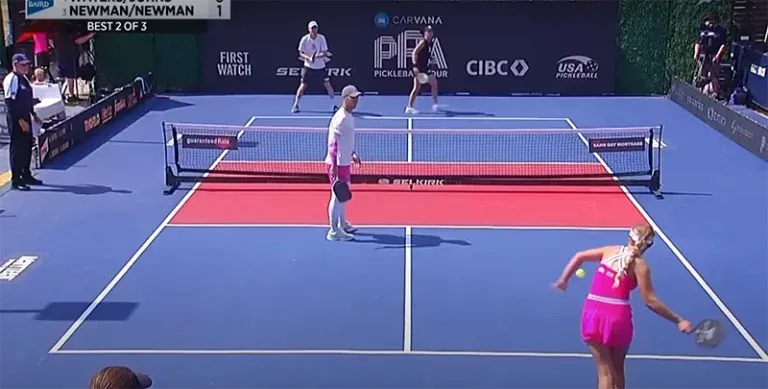
- Definition of Side Out: A side out is called when the serving team fails to score while serving. This can happen due to a variety of reasons, such as faults, or simply losing the rally to the receiving team. It's crucial to understand that the concept of a side out is rooted in maintaining the rigidity of the serving structure, emphasizing strategic serves and points.
- Scoring Mechanism: The scoring system is exclusive to the serving team: if they win the rally, they continue to retain the serve; if they lose, the rally ends with a side out. This creates a rhythm where the serving team must consistently perform at their highest level, creating pressure to avoid errors.
- Winning Points During a Rally: The excitement in the game often hinges on the battle for control. The back-and-forth nature of rallies produces thrilling moments where both teams vie for supremacy and the chance to serve. Maintaining focus during these rallies is critical for executing strategic plays and ensuring a successful return to serving.
- Implications of Side Outs on Strategy: Each side out introduces a fresh opportunity. The newly serving team must adapt quickly, positioning themselves to exploit any perceived weaknesses in their opponents. Acquiring the serve after a side out signifies a chance to recapture momentum.
By understanding how side out scoring functions in pickleball, players can enhance their strategic approaches, making critical decisions that will result in greater opportunities for points and ultimately, match victories.
Strategies for Maximizing Side Out Opportunities
To excel in pickleball, players must develop effective strategies for securing side outs and maintaining control of serve. Here are several tactics that can enhance gameplay and increase the likelihood of achieving side outs.

- Communication and Coordination: Strong communication between partners is crucial for effective positioning and shot selection. In doubles play, strategizing collaboratively can lead to impressive executions during critical moments. Discussing potential plays and formations allows teams to enhance their chances of forcing a side out.
- Aggressive Play: It's essential to remain assertive when returning serves. By putting pressure on the serving team, players can induce errors leading to side outs. Targeting perceived weaknesses in the opponents’ game can disrupt their rhythms and generate significant opportunities.
- Adaptability: Flexibility in strategy is vital. Players should assess their opponents’ strengths and weaknesses continuously, allowing them to adopt varying shot selections and positioning that further boosts their chances of earning a side out. Recognizing when particular strategies aren't working enables teams to pivot to more effective approaches.
- Shot Variation: Utilizing a variety of shots, such as spins and angles, can complicate opponents' returns and increase the likelihood of side outs. Adapting dynamic shot selection keeps opponents guessing and off-balance, propelling the serving team toward success.
- Mental Fortitude: Cultivating a positive and resilient mindset, particularly after setbacks, is crucial for bouncing back from lost points. Players who maintain composure and clarity can regroup to strategize effectively, reinforcing their chances of returning to a strong serving position.
These strategies provide players with practical methods to optimize their performance during side out situations while enhancing their overall gameplay in pickleball. With a firm understanding of how to navigate these opportunities, players can gain a competitive edge on the court.
Common Mistakes Leading to Side Out
Mastering the art of side outs requires players to recognize common pitfalls that can lead to unfavorable outcomes. Below we outline frequent mistakes that can result in side outs, as well as critical comparisons between side out scoring and rally scoring.
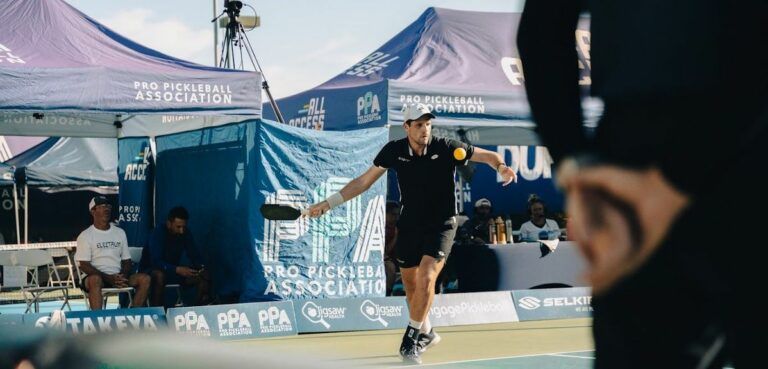
- Faults Committed by the Serving Team: The serving team can suffer side outs through various faults, such as hitting the ball out of bounds or failing to clear the net. These preventable mistakes underscore the need for focus and precision in serving.
- Poor Shot Selection: Players who make hasty or uncalculated shots risk committing errors that lead to side outs. Attempting risky plays without considering positioning often results in missed opportunities.
- Lack of Communication: Misunderstandings between partners can easily lead to side outs in doubles play. Effective communication is critical for ensuring proper positioning and coordinated plays.
- Underestimating Opponents: Failing to anticipate the opponent's moves can lead to position errors, lifting the chances of making mistakes that result in side outs. Keeping an eye on opponents serves to enhance strategic responses.
- Mental Lapses: Emotional factors can hugely impact performance. If players become frustrated or impatient, they may rush their plays or make incorrect judgments that contribute to side outs.
- Defensive Passivity: Some teams may exhibit passivity, waiting for their opponents to make mistakes instead of proactively applying pressure. A more engaged approach is necessary to avoid missed chances to regain serve.
Comparison of Side Out Scoring vs. Rally Scoring
Understanding the distinct approaches of side out scoring and rally scoring reveals the strategic implications that arise during gameplay. Here, we compare the two systems' mechanisms and their respective impacts.
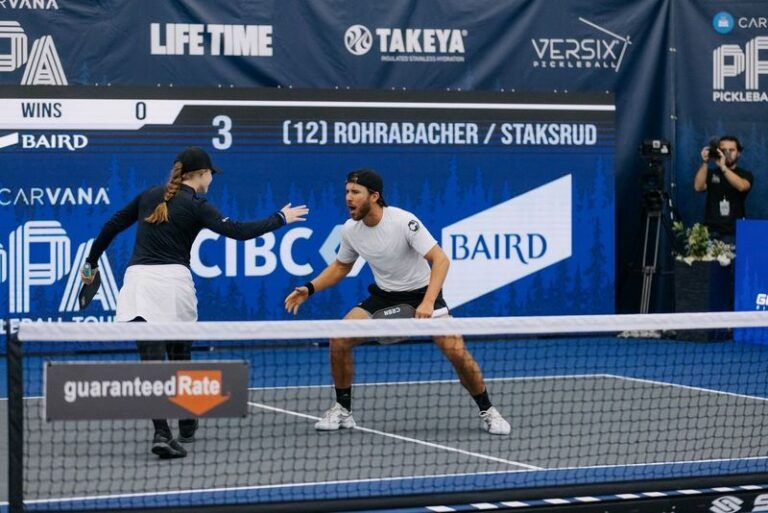
- Scoring Mechanism:
- Side Out Scoring: Points can only be attained by the serving team. The serve shifts when the serving team loses a rally. This method emphasizes the need for strong servicing strategies to minimize errors.
- Rally Scoring: Points can be earned by either team, regardless of who served. This allows for scoring opportunities across every rally, providing greater momentum flexibility throughout the match.
- Game Dynamics:
- Side Out Scoring: Often results in more strategic and conservative play as teams focus on maintaining serve and avoiding faults.
- Rally Scoring: Enables a quicker, more aggressive style of play, as each rally represents a chance to earn points, promoting risk-taking by players.
- Impact on Strategy:
- Side Out Scoring: This requires an emphasis on consistency, minimizing errors, and executing effective shot selection to keep the serve intact.
- Rally Scoring: Encourages an assertive approach, with players focused on maximizing scoring opportunities and exploiting weaknesses in their opponents.
- Psychological Effects:
- Side Out Scoring: Losing serve can create considerable psychological pressure, often leading to a loss of momentum and control for the team impacted.
- Rally Scoring: The format facilitates comebacks due to continuous scoring opportunities, promoting a sense of competition and positive dynamic shifts for both teams.
Through understanding these differences, players can enhance their strategic approach to the game, benefiting from an aligned mindset tailored to how the specific scoring system influences match dynamics.
Mental and Strategic Aspects of Facing a Side Out
Navigating the strategic and mental challenges presented by side outs is integral for success in pickleball. Effective play requires a balance of mental discipline and tactical flexibility during transitions of serve.
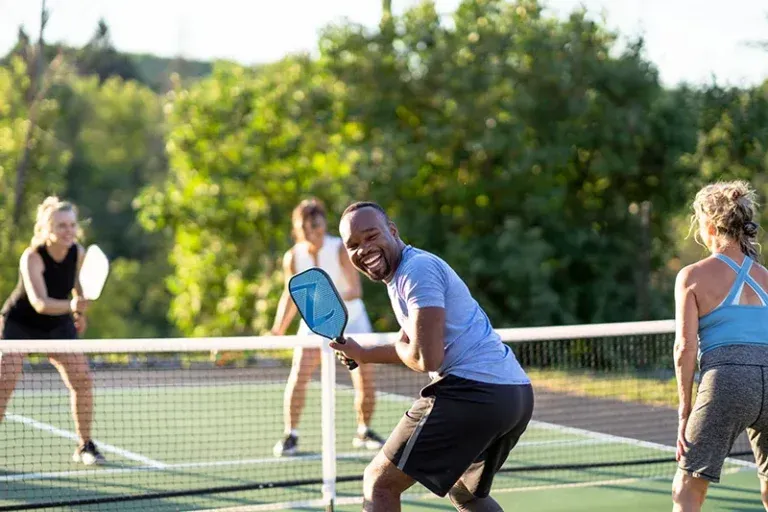
- Mental Fortitude: One of the most critical attributes players must possess is the ability to maintain focus and resilience when faced with a side out. This often involves managing frustration and pressure that arise when transitioning from serving to receiving. Staying calm fosters a grounded mindset, allowing players to regroup effectively.
- Cognitive Strategy: Anticipating the opponent's play after a side out can offer strategic advantages. Teams can use the brief pause to reassess their previous strategies and adapt accordingly, staying one step ahead of their opponents.
- Regaining Control: The dynamics of suddenly shifting from serving to receiving necessitates a mental shift. It becomes essential for teams to harness the side-out opportunity, seizing the moment to win back their serve and set a new pace for the match.
- Positive Mindset: Players should cultivate an attitude of resilience, viewing a side-out as a new opportunity instead of merely a setback. By reframing the situation positively, players are more likely to recover, adapt their tactics, and regain control over the match.
Strategically, players can harness a variety of techniques to maximize side out opportunities:
- Effective Returns of Serve: When receiving serve, players must aim to apply strategic pressure on the serving team, potentially forcing errors. Targeting shots deep and at angles helps create defensive challenges for opponents.
- Maintaining Tempo: Once a team regains serve, they must dictate the match's rhythm through intelligent shot selection. Employing a variety of strategies to divide opponents' attention places them at a disadvantage.
- Third-Shot Drop: Using this tactic allows teams to redefine the flow of play. By executing soft shots that delicately descend near the net, players throw serving teams into a reactive state, disrupting their strategy and enabling further defensive plays.
- Utilizing Momentum: Securing a side out generates shifts in momentum that can be leveraged. The renewed serve provides the opportunity to implement aggressive strategies to exploit opponents' vulnerabilities, reinforcing the need for awareness of gameplay dynamics.
Understanding these mental and strategic aspects of side out play equips players to respond effectively and leverage the game's tactical nuances, enhancing their performance significantly.
Historical Evolution of the Side Out Rule in Pickleball
The side-out rule in pickleball has evolved considerably since the game's inception, reflecting the shifting nature of competitive play and player feedback throughout its history.
- Original Rule Context: In its early days, enamelled with influences from volleyball, the side-out was simply defined as the moment in which the serving team failed to score during a rally, emphasizing the importance of accurate serving.
- Scoring System Adjustments: The introduction of rally scoring significantly altered the landscape, as points could now be scored regardless of which team was serving. This change shifted teams' perspectives on side outs as their strategic focus expanded to emphasize overall competitiveness rather than merely holding serve.
- Increased Formalization: With the establishment of governing organizations like the USA Pickleball Association (USAPA), rules regarding side outs were standardized, influencing structures and regulations governing competitive play. This increased clarity offered players a more consistent set of norms to adhere to during matches.
- Further Clarifications and Updates: Recent iterations in rules have continued to enhance players' understanding, particularly regarding service faults and penalties. Feedback from the community has sparked revisions to standardize technical execution around side outs, striving to maintain competitive fairness while enhancing clarity.
The evolution of the side-out rule in pickleball encapsulates a broader narrative of the sport's maturation, touching on aspects of strategic prominence, competitive dynamics, historical context, and ongoing refinements. Understanding this evolution provides valuable context for players striving to navigate their performance on the court.
Key Terms Related to Side Out in Pickleball
To further enhance understanding, here are some essential terms and definitions related to side outs in pickleball:
- Definition of Side Out: A side-out occurs when the serving team fails to win their rally, resulting in the transfer of serve to the receiving team.
- Serving Team: This refers to the team currently in control of the serve, with the exclusive capability of scoring points during rallies.
- Receiving Team: The opponent team trying to win the rally to gain the serve. Their primary goal is to capitalize on the side outs and score points.
- Rally: A sequence during which the ball is played back and forth between teams, ceasing when one team fails to return it correctly.
- Faults: Errors committed by the serving team, such as hitting the ball out of bounds or into the net, which can result in a side out.
- Double Side Out: In doubles play, it refers to the scenario where both players on the serving team fail to win a point, resulting in a side out for the receiving team.
FAQs
What happens during a side out?
During a side out, the serving team loses the opportunity to score points, and control of the serve switches to the opposing team.
Why is the side out rule important?
The side out rule ensures that both teams have a chance to serve and score, thus maintaining fairness in the game and promoting competitiveness.
How does a side out affect the game's rhythm?
Side outs create dynamic shifts in momentum, as control of the serve transitions between teams, altering strategies and psychological approaches to play.
What can players do to avoid losing a side out?
Improving serve accuracy, return skills, and communication strategies are crucial in maintaining possession while minimizing pickleball faults that could lead to a side out.
Can the side out rule be advantageous for the serving team?
Yes, achieving a side out allows the serving team to regroup, reassess strategy, and regain their opportunities to control the game's pace.
Conclusion
Mastering the side out in pickleball is not solely about maintaining the serve; it transcends into a broader strategic framework that emphasizes teamwork, adaptability, and mental strength. By recognizing the significance of side outs, players can embrace its implications for scoring and strategy, enhancing their overall gameplay. The ability to capitalize on each side out, paired with an understanding of game dynamics and mechanics, equips players to harness competitive advantages on the court. Continuous refinement of strategies, mental preparedness, and effective communication will maximize players’ opportunities to regain and retain momentum in their matches. Ultimately, the side out is more than a mere rule it embodies the essence of competitiveness that makes pickleball thrilling and strategically engaging.










